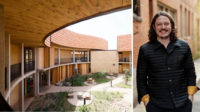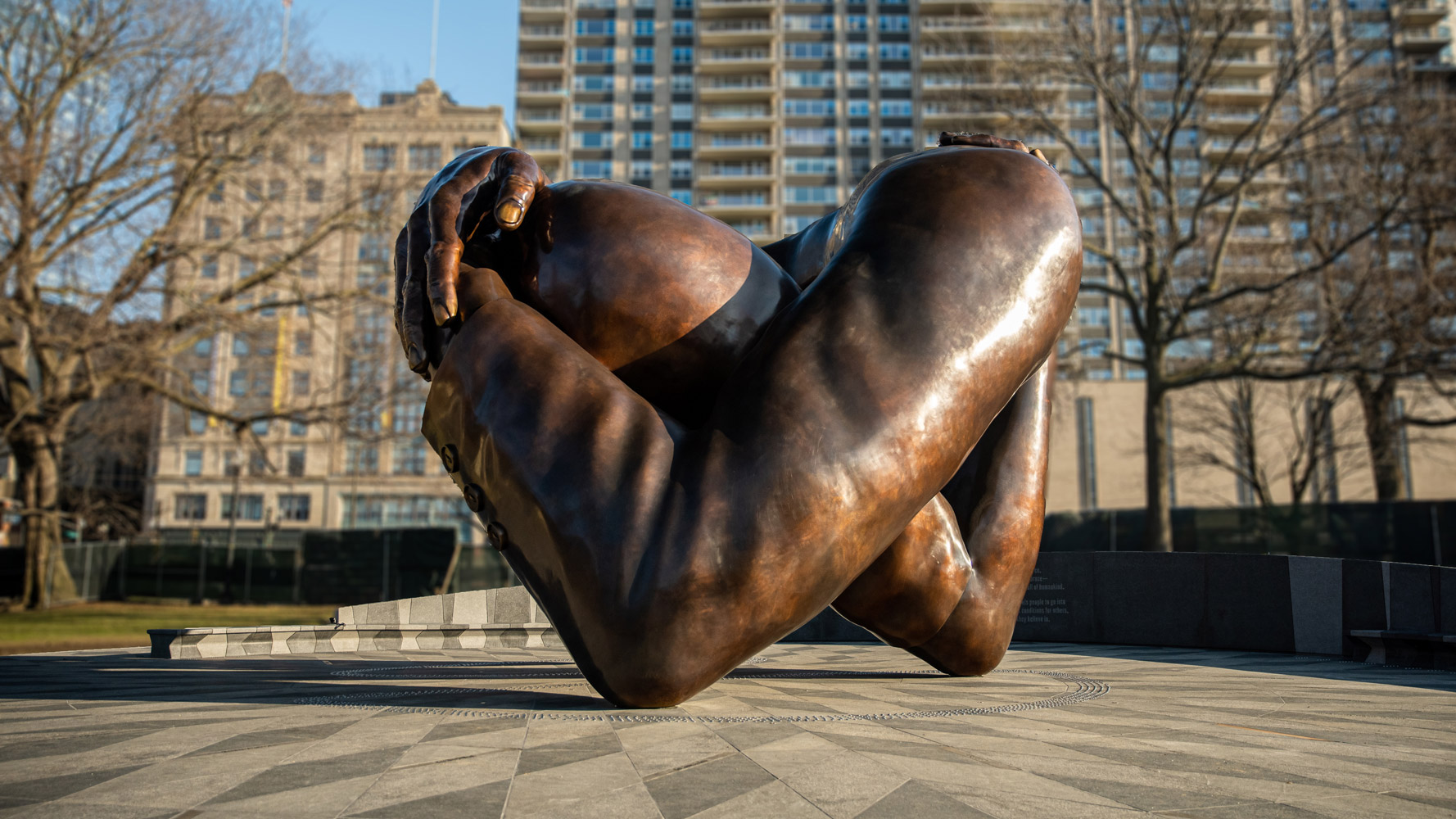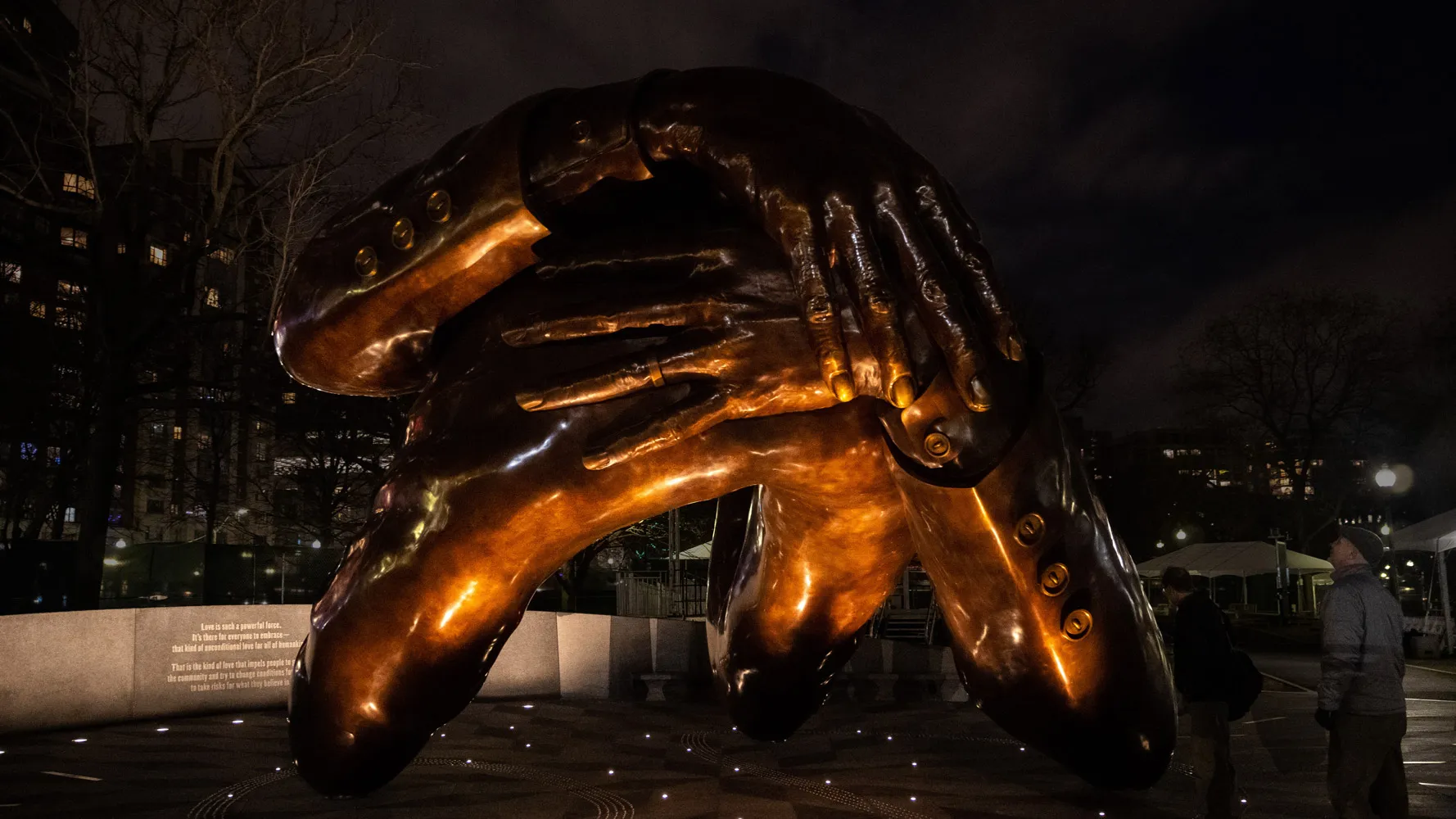MASS Design Group and Hank Willis Thomas Unveil Boston Memorial to MLK and Coretta Scott King






Architects & Firms
Just ahead of Martin Luther King Jr. Day, The Embrace, a monumental bronze sculpture depicting the intimately intertwined arms of Dr. King and Coretta Scott King, was revealed on the Boston Common to commemorate two of the American Civil Rights movement’s most prominent leaders. Designed by artist Hank Willis Thomas in collaboration with MASS Design Group, the abstract work pays homage to the pair, who met in Boston as students in the 1950s and briefly made a home there. The Embrace anchors the new 1965 Freedom Rally Memorial Plaza, a 6,000-square-foot public gathering place, also designed by MASS, that memorializes a landmark speech made by King at the Boston Common.
Willis Thomas refers to the collaborative work as “a testament to what we can achieve when we come together,” adding that “the sculpture embodies people’s capacity for love, change, and hope for the future.”
The Boston Common’s first new monument in more than three decades, The Embrace has garnered varied responses since its official debut on January 13. Some have critiqued the 20-foot-tall sculpture’s disembodied form and deemed it obscene from certain angles, while others have offered praise for the inclusion of Coretta Scott King—a notable activist in her own right—and the emphasis on the role of community support. Martin Luther King III, the couple’s eldest son, has publicly defended the work, saying he was “moved” by the $10 million sculpture and what it represents, including his parents’ partnership that many monuments omit. He noted that despite portraying the limbs of his parents—and not their faces—The Embrace “represents something that brings people together. And in this day and age, when there's so much division, we need symbols that talk about bringing us together."

Artist Hank Willis Thomas in front of The Embrace at an unveiling event. Photo courtesy For Freedoms
Known for creating socially engaged work that incorporates protest imagery and overlooked historical narratives, Brooklyn-based Willis Thomas is a conceptual artist, photographer, and co-founder of artist collective For Freedoms. (The group was also behind the recent temporary Eyes on Iran activation at the Louis Kahn–designed Franklin D. Roosevelt Park in New York City.) Conceived in partnership with 2022 AIA Architecture Firm Award winner MASS Design Group, Willis Thomas’s proposal for a permanent monument and plaza honoring Dr. King and Coretta Scott was selected in 2019 by a committee of curators, educators, and artists organized by social justice nonprofit Embrace Boston.
The work depicts a joyful moment between the couple shortly after King learned that he had won the 1964 Nobel Peace Prize. The unorthodox form of the public memorial animates the nation’s oldest city park—a collective gathering space established in 1634 that boasts over 400 years of revolutionary history. On April 23, 1965, the Common served as the ending point of the first march led by King outside of the South. Following the march down Columbus Avenue from the Roxbury neighborhood to downtown Boston, King spoke to an assembled crowd of more than 20,000 people there.
“I was educated here, and it is one of the cities which I call home,” said King on that day. “But it would be irresponsible of me to deny the crippling poverty and injustice that exist in some sections of this community…the vision of the New Boston must extend…Boston must be a testing ground for the ideal of freedom.”
Emblazoned in bronze, the towering, 19-ton tribute to the Kings also celebrates the more than 60 Boston civil rights leaders active between 1950 and 1970. They are collectively honored through a plaque embedded in the center of the 1965 Freedom Plaza, which itself is composed of alternating gray, diamond-shaped granite pavers meant to evoke quilt-making traditions. MASS’s design also includes two circular bench walls with inscribed elements that feature a quote by Coretta Scott King. These elements come together to create a new site at the Boston Common for quiet contemplation and civic engagement.

Detail of the two-story bronze sculpture by Hank Willis Thomas and MASS Design Group.
Photo © MASS Design Group
Boston’s mayor, Michelle Wu, referred to The Embrace in a statement as a “revolutionary space … for conversation, education, and reflection on the Kings’ impact in Boston and the ideals that continue to shape the fabric of our city,” emphasizing the recognition owed to Coretta as well. Wu added: “As we continue our work to ensure Boston is a city for everyone, this memorial is a powerful call to embrace each other more, embrace our nation's history, and embrace what’s possible when we center community.”
Based in Boston with several satellite offices including a busy presence in the Rwandan capital of Kigali, MASS has overseen a variety of community-centric, commemorative projects, including the National Memorial for Peace and Justice in Montgomery, Alabama, which opened in 2018 as the country’s first permanent memorial dedicated to Black victims of racial violence, namely lynching. On view at the National Building Museum in Washington, D.C. through March, is the Gun Violence Memorial Project, another collaboration with Willis Thomas presented in conjunction with a broader survey entitled Justice is Beauty: The Work of MASS Design Group. The unveiling of The Embrace marks one of the first projects completed since MASS president and CEO Michael Murphy stepped down from his role in October of 2022, and continues the firm’s Public Memory and Memorials Lab portfolio.
“From ideation to creation, building The Embrace was an exercise in intention,” says MASS Design Group principal and lead architect, Jonathan Evans. “To create a space that celebrates and uplifts the Kings’ love as a national symbol of hope and healing on the Boston Common, one of America’s oldest public spaces, starts to shift the narrative. The memorial shows what is possible.”
The Embrace is accompanied by an audio component created with experiential design and technology company Art Processors to provide a digital corollary to Boston’s newest public sculpture.







